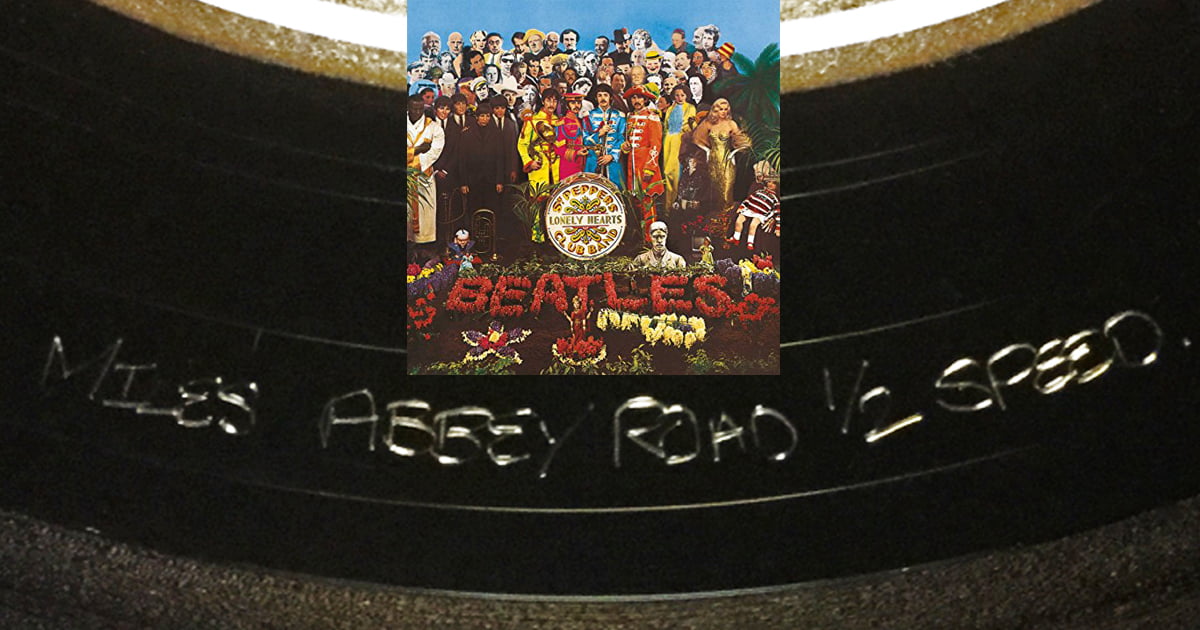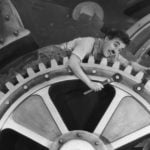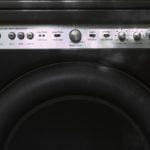It’s the time of year for saving money!
The remixed and revelatory 50th Anniversary edition of The Beatles’ Sgt. Pepper’s Lonely Hearts Club Band delivers — for the first time — a true high fidelity stereo presentation of this music while honoring the intent of The Beatles’ original mono creation. Producer Giles Martin emulates the original mono mix on which the band (and his father, George Martin) worked so hard, while shedding new light on a beloved recording that many of us thought we knew inside out. Free from the shackled limitations imparted by mid-60s technologies and early recording processes, the new 2017 stereo edition of Sgt. Pepper’s Lonely Hearts Club Band is a re-invention in many ways, offering newfound clarity, detail and dynamics many of us long time fans have only dreamed about.
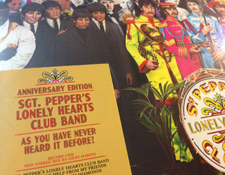 This fabulous new stereo mix of Sgt. Pepper is a fine complement to the wonderful new 5.1 surround sound mix which I discussed in Part 1 of this review series (which you can easily read about by clicking here). Both versions present exciting new ways to experience one of the most influential recordings and overall pop art statements of the 1960s.
This fabulous new stereo mix of Sgt. Pepper is a fine complement to the wonderful new 5.1 surround sound mix which I discussed in Part 1 of this review series (which you can easily read about by clicking here). Both versions present exciting new ways to experience one of the most influential recordings and overall pop art statements of the 1960s.
Now, for those of you who didn’t know, over the years most people listened to the stereo version of Sgt. Pepper, a version of which The Beatles themselves were not involved in creating. The band put all their energy into creating the mono mix which, in 1967, was the dominant audio format for audio playback on vinyl records and of course for radio (and TV) broadcasts; stereo was still something of a novelty from a commercial standpoint, it was about 10 years old in the consumer marketplace at that point and mostly served a relatively niche market of classical and jazz music buffs and early-adopter audiophiles. Yet as stereophonic sound began to capture the imagination of mainstream pop music fans — what with the advent of portable stereo systems, massive-furniture console home stereo systems and fairly high fidelity stereo headphones and not the least the ascension of stereo FM radio — the stereo pressings of Sgt. Pepper became the much more common choice among listeners. Monaural records were rapidly discontinued from the general consumer marketplace (and thus original mono pressings are still somewhat collectible among Beatle-fanatics).
Not surprisingly, I have met many people over the years perplexed about the mono Sgt. Pepper. They question, sometimes quite aggressively: “Why would I want to listen to a mono mix when a perfectly adequate stereo version exists?” It is there that I have had to explain to them that (a) a genuinely “perfectly adequate” stereo mix didn’t really exist (up until now!) and that (b) the mono mix of Sgt. Pepper was always the preferred version for The Beatles themselves as well as many hardcore Beatle-fans and audiophiles.
I can only speculate precisely why The Beatles themselves preferred the mono Sgt. Pepper but I can certainly offer you my perspective, Dear Readers, as lifelong Beatle fan: first off, the original mono mix rocks a whole lot more than the old stereo version, locking in the bass and drums in the center between your ears and delivering a better sense of an actual band performing. There is a stronger overall emphasis of the rhythm section in particular on the mono mix — you could more readily hear Ringo’s innovative playing as well as Sir Paul McCartney’s buoyant bass lines. There are many other little details The Beatles attended to in the mono mix which were presented differently in the old stereo mix, especially the relative balance of instruments.
It is super important to understand that these new 2017 stereo mixes are made from as close to the first generation multi-track recordings as possible– this is something that hasn’t been done before for Sgt. Pepper. This is a more complex process than simply going back to the final master tape to “remaster” the album. Here, they have gone back to the original recorded production elements — including interim sub-mixes, pre-final mix-down — to recapture all that music in the highest possible fidelity as it was initially laid down on analog magnetic tape for the original recording session.
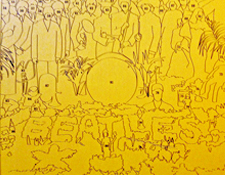 While I don’t have precise information about exactly how this new Sgt. Pepper mix was created, I assume that they did this in a similar manner to the way the newer Beach Boys’ Pet Sounds stereo and 5.1 surround mixes were created — and for those who are interested, I wrote a feature about this back in the ’90s for EQ Magazine, a link to which has been posted on a forum that you can find (text only, mid way down the page) by clicking here. There, they transferred original analog recorded elements to a digital recording format while employing as much of the key original studio processing that added to the sound of the album back in the day. Putting this (arguably) first generation musical information into a modern digital audio workstation type program (such as Pro Tools) would enable the creation of a new Sgt. Pepper mix free of the sonic degradation that might have happened if those same discrete tracks were “bumped” or “bounced” in the analog realm, be it for a final mix or a “sub” mix (more on that in a moment).
While I don’t have precise information about exactly how this new Sgt. Pepper mix was created, I assume that they did this in a similar manner to the way the newer Beach Boys’ Pet Sounds stereo and 5.1 surround mixes were created — and for those who are interested, I wrote a feature about this back in the ’90s for EQ Magazine, a link to which has been posted on a forum that you can find (text only, mid way down the page) by clicking here. There, they transferred original analog recorded elements to a digital recording format while employing as much of the key original studio processing that added to the sound of the album back in the day. Putting this (arguably) first generation musical information into a modern digital audio workstation type program (such as Pro Tools) would enable the creation of a new Sgt. Pepper mix free of the sonic degradation that might have happened if those same discrete tracks were “bumped” or “bounced” in the analog realm, be it for a final mix or a “sub” mix (more on that in a moment).
For those reading this who may not be conversant about recording processes, in analog recording, when you make a copy you lose information; inevitably there is a certain amount of distortion, tape hiss and other anomalies which begin to creep in and pile up sonically (if you will) on subsequent dub-downs, impacting the overall sound in subtle but distinctly audible ways. That is the nature of the medium, especially early on when the number of available tracks were limited; Sgt. Pepper was recorded on a 4-track machine, so that means only four channels of information could be recorded on a single reel of magnetic audio tape before the original producer, George Martin, had to make an interim reduction mix to free up additional tracks in order to create the intensely detailed, lush and rich sounds The Beatles were targeting. Mr. Martin and his team rose to the occasion, innovating new methods to capture the complex sound which The Beatles hoped to convey while trying to maintain the highest fidelity possible. For example, they invented a then-new method to sync multiple tape machines in order to record and playback simultaneously essential parts such as the orchestra without losing any sound quality from interim dub downs.
Eventually all this material would be mixed — and thus effectively dubbed down again — to the final analog master tape which would then be used for disc mastering and such. That Sgt. Pepper sounded as grand as it did back in the day is a testament to the skills of George Martin and his team, who ranked (and still rank) among the best engineering minds of their times, maximizing fidelity and minimizing the anomalies.
Understanding this legacy and its challenges, Producer Giles Martin has revealed a sparkling new Stereo presentation of Sgt. Pepper that sounds at once fuller, richer and brighter, timeless and yet still rooted in the flavor of 1967. It effectively removes a shroud clouding the original music.
]]>“Mastering” for the new mix was also handled with kid gloves both on vinyl and digital platforms. While working on another article I’m preparing for our parent publication Home Theater Review, I received some insight from Miles Showell, the Mastering Engineer at Abbey Road Studios who worked on this new incarnation of Sgt. Pepper : “Something I have been doing of late when I know there is likely to be a vinyl release of a project is to capture a parallel feed of the mastered signal to my digital workstation specifically for the vinyl version. This vinyl pass is without any extra digital limiting (used to make digital platforms sound LOUD) and is completely unnecessary for analogue records and the cuts sound a lot better without it. This was how I cut the masters for the new stereo mix of Sgt. Pepper. The master lacquer discs were half-speed mastered from an un-limited feed whereas all the digital platforms will have digital limiting applied.”
If you look closely at the “dead wax” on the new vinyl pressings it indeed says, etched into the vinyl: “Miles’ Abbey Road 1/2 speed”
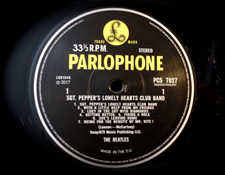 Now, all you digital fans, please don’t fret. We asked Mr. Showell for more insight into the “digital limiting” he spoke of and the new Sgt. Pepper project was very much handled with care and sensitivity to the music. He replied: “The limited version was used as the source on all of the digitally delivered formats. It was kept high resolution for the Blu-ray and down-sampled and dithered for the non high resolution formats (e.g. CD). I should point out here that I only applied very gentle limiting as thankfully the brief for this album was not to slam it against the wall with excessive level and allow the whole thing to breathe. This is obviously a good thing for sonics.”
Now, all you digital fans, please don’t fret. We asked Mr. Showell for more insight into the “digital limiting” he spoke of and the new Sgt. Pepper project was very much handled with care and sensitivity to the music. He replied: “The limited version was used as the source on all of the digitally delivered formats. It was kept high resolution for the Blu-ray and down-sampled and dithered for the non high resolution formats (e.g. CD). I should point out here that I only applied very gentle limiting as thankfully the brief for this album was not to slam it against the wall with excessive level and allow the whole thing to breathe. This is obviously a good thing for sonics.”
A good thing for sure, as the sonics sound excellent on this release on all versions I have listened to! I like the Blu-ray version of the new Sgt. Pepper mix as much as I like the new vinyl pressing — they are different animals, each with their own strengths — leaning toward the vinyl for stereo listening and the Blu-ray for 5.1 surround. For those of you on the fence, you might consider all these new options as a sort of “Good, Better, Best” type scenario: so, if the 44.1 kHz, 16-bit CD sounds pretty great, the 48 kHz, 16-bit DVD sounds a bit better and the 96 kHz, 24-bit Blu-ray Disc version and the vinyl LP sound significantly better still.
In preparing this review for the new stereo Sgt. Pepper, I did some refresher listening which included the:
— Original UK mono Parlophone LP
— Original UK stereo Parlophone LP
— 1980s UK stereo EMI/Parlophone CD
— Original 1960s US Capitol Records stereo rainbow label LP
— Remastered mono LP (from the all analog Beatles In Mono vinyl collection which I’d reviewed back in 2014)
— Remastered mono CD (also from Beatles In Mono series).
I listened to pretty much every version of Sgt. Pepper I own, save for the two pre-recorded cassettes! I really did this Dear Readers, as much for you as for myself to make sure I was really hearing what I was hearing!
For your own taste testing process, here are some details you might want to listen for on your old stereo mixes when comparing to the new edition:
–Extreme panning of vocals, bass and drums
–Squashed sounding and much lower-in-the-mix drums, cymbals
–Indistinct guitar parts
–Buried harmonies
On the new stereo mix, the drums and bass are much more tightly focused, closer to how they are in the original mono mix, with the instruments panned more toward the center for a more rocking and cohesive listening experience.
The freshness of being able to hear this music so clearly in first generation fidelity cannot be overstated: it is quite startling at times! You can hear the amplifier tone on the guitar solo in “Fixing a Hole.” Ringo’s splashy cymbal work and interesting snare fills on that song are particularly present. You can hear the room ambiance around the harp on “She’s Leaving Home” and there is that deep rich low cello which was all but invisible on earlier versions, mono OR stereo.
Listen for Ringo’s kick drum hits on “Lovely Rita” which propel the song along tightly in-sync with Sir Paul’s rolling bass lines. The acoustic rhythm guitar parts in that song never sounded so distinct and present — really essential, they make the song sound rich and buoyant.
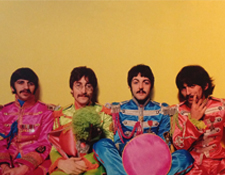 For this next one, don’t just sit back and listen: get up close to your speakers and listen closely for Ringo’s rapid-fire drum beats in the first 11-or-so seconds of the chorus intro to “Good Morning Good Morning.” I’d never noticed that before and its really cool (you can also hear it at other points throughout the song)! I really like the drum presentation on this song which works really great in stereo.
For this next one, don’t just sit back and listen: get up close to your speakers and listen closely for Ringo’s rapid-fire drum beats in the first 11-or-so seconds of the chorus intro to “Good Morning Good Morning.” I’d never noticed that before and its really cool (you can also hear it at other points throughout the song)! I really like the drum presentation on this song which works really great in stereo.
The clarinets on “When I’m 64” sound remarkable and if you listen closely you can almost feel the clarinetist’s breath coursing through these woody instruments. Also, be sure to listen for Ringo’s jaunty ride cymbal work at the end of that song!
On “With A Little Help From My Friends” Sir Paul’s (probably) flat-picked descending lines are much clearer, particularly during the call-and-response “Do you need anybody?” sections — also note how they lock in with Ringo’s kick drum at times. Ringo’s drum hits before the choruses on “Lucy in the Sky with Diamonds” rock madly. Listen for the hand claps in “Getting Better” which pair tightly with the congas on the verses.
So…. I could go on but I think by now you get the idea this is a fairly essential reissue series both for hardcore Beatle fans overall as well as simply fans of Sgt. Pepper.
But I’m sure you are probably sitting there wondering still if it is all worth spending your hard earned money on again on yet another incarnation of Sgt. Pepper? Well, that decision, Dear Readers will ultimately be up to you but I think it is worth it, especially if you are a fan of the album and The Beatles! Your choice of format may come down to your listening preferences and budget of course. At minimum, most Beatle fan audiophiles will want to get the new stereo LP. Beatle maniac-fanatics like me and many of my friends will want to plop down the dollars for the Super Deluxe Edition box set to hear all the outtakes, the 5.1 surround mix and all that high resolution 96 kHz, 24-bit high fidelity Blu-ray goodness. Given all you get in the package — a Blu-ray, a DVD, four CDs, a hardcover, full-color, deeply detailed book, plus two posters, a lenticular 3D-flavored outer cover and reproduction of the original master tape boxes to store everything in — the approximate $120 cost of entry seems very reasonable. Even the basic CD version of the new Sgt. Pepper sounds great so if you want to just start there you won’t be disappointed — it sounds great in the car!
Keep an eye out for Part Three of this review series where I will look more closely at all the bonus tracks and other goodies in the deluxe edition set (as well as on the vinyl which comes with a bonus disc of session outtakes and alternates!).
These 50th Anniversary reinventions of The Beatles’ Sgt. Pepper’s Lonely Hearts Club Band are a dream for both the casual and hard core fan.
A splendid time is indeed guaranteed for all!
